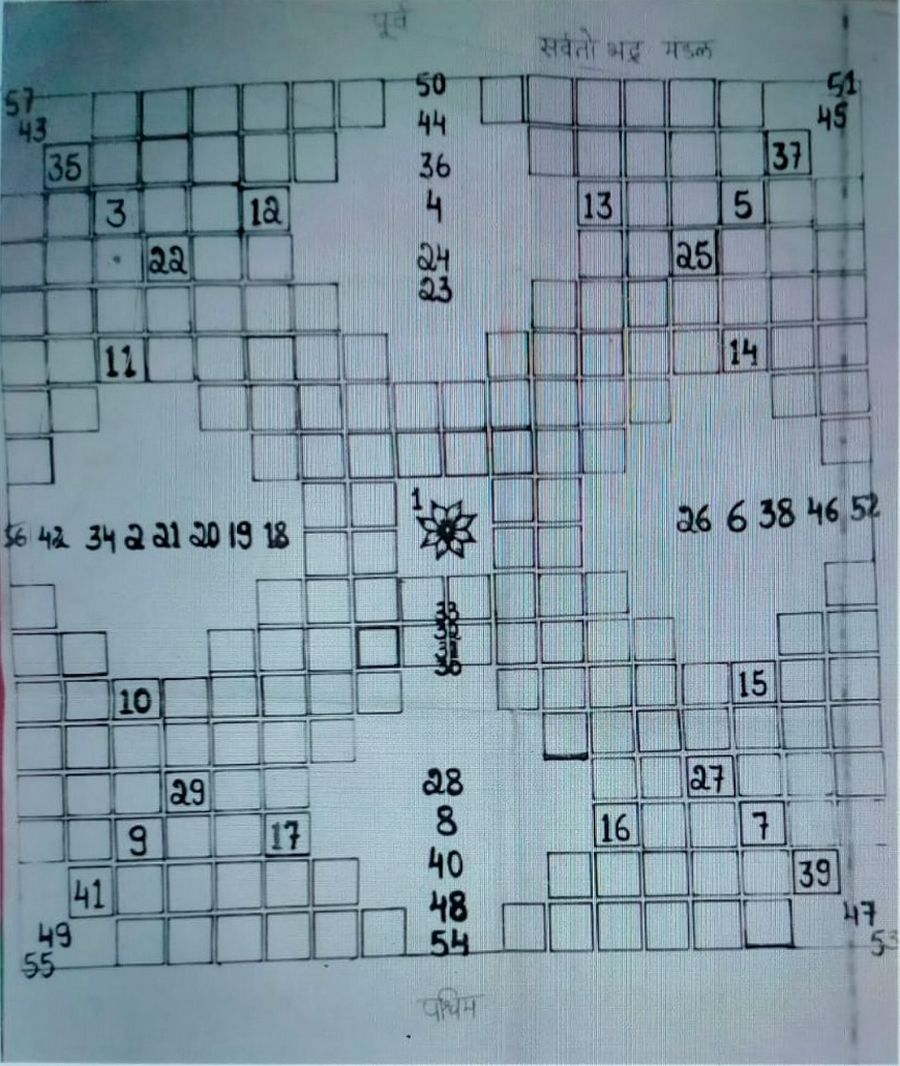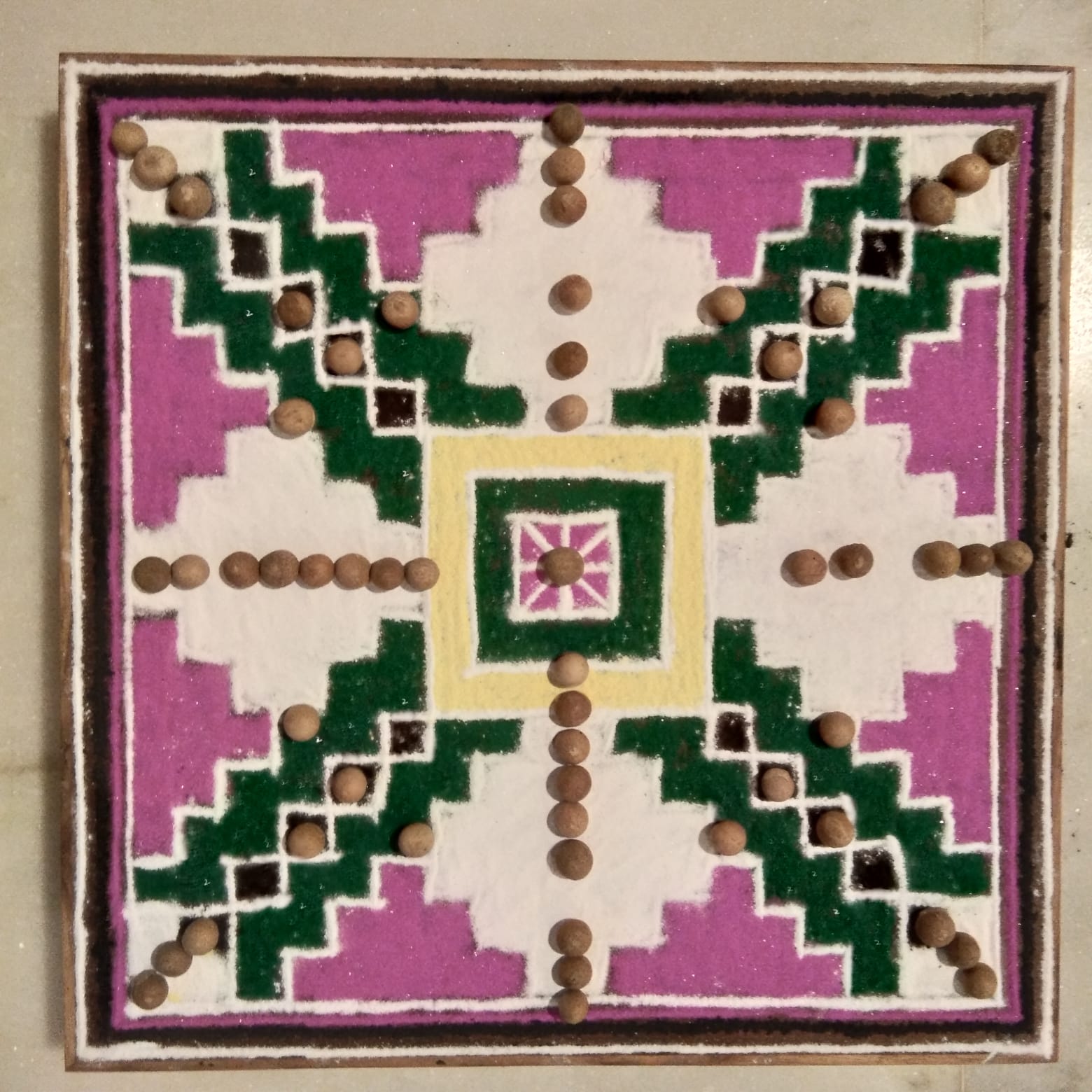GURU PŪRṆIMĀ – A SPIRITUAL TREAT
By Sunetrā Nāgarkaṭṭi
13th July 2022
Guru Pūrṇimā heralds the beginning of Chāturmāsa, which literally means 4 months, and specifically the four months of rainy season. This period is utilised for sādhanā or anus͟ht͟hāna-s (the practice of religious austerities such as Japa, Meditation) by sādhaka-s and sannyāsī-s. For sannyāsī-s there is also another way to observe Chāturmāsa, where it is observed for four fortnights, from Ās͟hād͟ha Shukla Pūrṇimā (Guru Pūrṇimā) to Bhādrapada Shukla Pūrṇimā (Seemollaṅgana / Uṭṭaavnche Punnava). As per our Chitrāpur Mat͟h tradition, our Dharma Guru-s - the Mat͟hādhipati-s observe Chāturmāsa of four fortnights (paks͟ha-s) i.e. two months. Chāturmāsya Vrata is observed by our Swāmījī every year at any one of the Samādhi sthala-s of our previous Swāmījī-s, staying for the entire duration at the sacred Ks͟hetra.
For Gṛhastha-s, this period is doubly advantageous. They get the opportunity to serve their Guru, and also practise sādhanā in different ways like Shravaṇa, (listening), Manana (reflection), Nididhyāsana (contemplation), Pūjana, Bhajana, and Japa, all under The Guru’s guidance and dṛs͟hṭi!
During this time, H.H.Swāmījī not only perform His own anus͟ht͟hāna, but also enlighten sādhaka-s through swādhyāya on topics from the Upanis͟had-s, Bhagawadgītā, stotra-s, or any other spiritual treatise. We also benefit from His Āshīrvachana-s during the 2-month period. Pūjya Swāmījī clears sādhaka-s’ doubts through Parāmarsha sessions and also guides them in their spiritual practices. So, we Chitrāpur Sāraswat-s, observe this period of Chāturmāsa for sāmūhika as well as vaiyaktika sādhanā.
The spiritual benefits for sādhaka-s are amplified if they combine their sādhanā-s with control during Chāturmāsa. The former may take the form of a resolve to do extra mālā-s of the is͟hṭa-mantra japa or reading of the Chitrāpur Guruparamparā Charitra. The latter could be a resolve to abstain from certain foods, or a vow to perform tapasyā like sleeping on the ground, doing prāṇāyāma for a fixed duration of time every day, and so on. The vow, simple or hard, should commence on Ās͟hād͟ha Shukla Pūrṇimā i.e. Guru Pūrṇimā, (which falls on 13th July this year) and concludes on Bhadrapada Shukla Purnima. (10th September 2022)
The sādhaka expresses his/her resolve by taking a saṅkalpa and prays before a vigraha or picture of The Lord, “O God, I have undertaken this vrata in Your presence. May I succeed without letting it go, and without any hindrance.” On the concluding day of Chāturmāsa, the sādhaka thanks The Lord for His Kṛpā, for completion of their vrata successfully, and asks for forgiveness for any mistakes in the performance of the vrata.
The vrata is a way of honing our physical and spiritual stamina. It strengthens one’s ability to say NO to certain habits, boosting our determination and confidence, motivating us to take on bigger vows....and thus we slowly but surely progress towards a more intense, fulfilling sādhanā.
Our sādhanā can commence, progress, and be completed only with the grace of the Guru. We need Upadesha and guidance of Guru at every step, so that we move in the right direction and at the right speed. It is the Gurushakti which helps humans to reach the goal of human birth - Self Realisation - by protecting and guiding them constantly. It is but natural to express our respect and gratitude for all the Brahmavidyā-Pravartaka (Guru-s who promote knowledge of Brahma-tattva, Principle of Brahman) by remembering Them; and this Pūjya Swāmījī does by performing Guru Maṇḍala /Vyāsa Maṇḍala Pūjana on Guru Pūrṇimā.
The day begins with Lord Bhavānīshaṅkar Suprabhātam and around 8 am H.H. Swāmījī performs Jalābhis͟heka of the Samādhi-s of our Guru-s of Chitrāpur Guruparamparā at the Mat͟h where Chāturmāsa is being observed. Along with Jalābhis͟heka of Guru Samādhi-s, Swāmījī performs Jalābhis͟heka of other deities also installed in that respective Mat͟h.
The Pradhāna Archaka then does a prārthanā and takes a saṅkalpa on behalf of the laity with the following words : “May it please Your Holiness to stay here most comfortably. We indeed deem it our good fortune and blessedness. We are grateful to Your Holiness for giving us this opportunity to serve You. We shall serve Your Holiness cheerfully and to the best of our ability.”
After the Sāmūhika Prārthanā, Swāmījī returns to His Kuṭīra. At 10 am, H.H. Swāmījī arrives for the Vyāsa Maṇḍala Pūjana. This Guru Pūrṇimā Pūjana takes nearly 2 hours, and there is always a large gathering of sādhaka-s who witness this sacred occasion.
GURU PŪRṆIMĀ PŪJANA consists of four Pūjā-s:
1. Shrī Mahāgaṇapati Pūjana
2. Brahmādi Maṇḍala Pūjana
3.Vyāsa Maṇḍala Pūjana
4. Regular Guru Pūjana
GURU PŪRṆIMĀ PŪJANA:
After the Pradhāna Saṅkalpa, Pūrvāṅga pūjā with Manyusūkta chanting by our Bhaṭ mām-s, Shrī Mahāgaṇapati Pūjā is performed by Swāmījī for completion of Guru Pūrṇimā Pūjana without any obstacle. This is followed by the Pūjana of the Brahmādi (also known as Sarvatobhadra) Maṇḍala of 57 Devatā-s.

A design (like the one shown above) is drawn on a board with colourful Raṅgolī powder and has a fixed place for each Devatā of our Universe. Each Devatā is invoked with mantra-s that pronounce their names. Among these are Brahman, Soma, Indra, Agni, As͟hṭavasu, Kashyapa, Atri, Chāmuṇḍā, Varahi, Gadā, Trishūla and Gaṅgā. Shāligrāma-s are used to represent each Devatā, and after placing them in their respective positions on the Maṇḍala, they are offered Gandha, Aks͟hata and Flowers.
After the pūjana of Brahmādi Maṇḍala, the pūjana of Vyāsa Maṇḍala / Guru Maṇḍala begins.


Vyāsa Maṇḍal is represented as a flower with eight petals around a small circle in the middle, drawn in a square on the board. The petals and circle in the middle are filled with colourful grains and the parts outside the flower are filled with coloured Raṅgolī.
H.H. Swāmījī invokes Gurushakti on Vyāsa Pūrṇimā in a systematic way as prescribed by our own Mat͟h Sampradāya. Gurushakti, down the ages, has manifested through innumerable forms of Guru-s. It is impossible to list them. So Pañchaka-s (The Guru and his four main shis͟hya-s) of nine Guru-s are invoked by Swāmījī with great reverence.
The 9 Pañchaka-s (group of 5 each i.e. The Guru and His main 4 shis͟hya-s) are as follows. The directions here are in relation to Daks͟hiṇāmūrti Pañchaka.
1.Daks͟hiṇāmūrti Pañchaka in the middle
a) Sanaka b) Sanātana c) Sanatkumār d) Sanandana
2. Brahma Pañchaka in Uttara (North)
a) Atharvāṅgīrasa b) Shvetashvatara c) Bhāradwāja d) Nārada
3. Vasis͟ht͟ha Pañchaka in Ῑshānaya (Northeast)
a)Yājñavalkya b) Dattātreya c) Shvetaketu d) Parāshara
4. Vyāsa Pañchaka in Pūrva (East)
a) Sumantu b) Jaimini c) Paila d) Vaishampāyana
5. Kṛs͟hṇa Pañchaka in Ajneya (Southeast)
a) Bhīshma b) Shuka c) Gauḍapāda d) Govindapāda
6.Bhās͟hyakāra Pañchaka in Daks͟hiṇa (South)
a) Vishwarūpa (Sureshvarāchārya) b) Padmapāda c) Hastāmalaka
d) Toṭakāchārya
7. Draviḍāchārya Pañchaka in Nairutya (Southwest)
a) Vivaraṇāchārya b) Vidyāraṇya c) Ānandagiri
d) Anubhūtiswarūpāchārya
8. Guru Pañchaka in Pashchima (West)
a) Parama Guru b) Parames͟ht͟hi Guru c) Parātpara Guru
d) Samasta Brahmavidyā Sampradāya Pravartka
9. Ātma Pañchaka in Vayavya (North West)
a) Antarātman b) Paramātman c) Sarvātman d) Brahmātman
In the Maṇḍala, The Guru and His four shis͟hya-s are placed in their respective positions of the petals and are worshipped. Here too, Shāligrāma-s are used to represent the Guru-s and shis͟hya-s.The circle in the middle is a place of Shrī Daks͟hiṇāmūrti, the Guru form of Shiva, often depicted as sitting under banyan tree, with four hands holding Rudrāks͟hamālā, a book, Amṛta Kalasha and one hand with Chinmudrā. Pūjya Swāmījī places His Sphaṭika Shivaliṅga and Devī Rājarājeshwarī Vigraha in the circle. So, totally nine Guru-s and their 36 shis͟hya-s are worshipped on this Maṇḍala by offering them Gandha, Aks͟hata and flowers with the respective mantra-s.
After Guru Maṇḍala Pūjā, Swāmījī commences with the regular Guru Pūjana. During this Pūjana, the devotees who are present there, repeat after Swāmījī the shloka-s, prārthanā-s, and As͟hṭottarashata Nāmāvali-s. Swāmījī performs Guru As͟hṭottarashata Nāmāvali by offering Bilvapatri-s and during Vedavyāsa As͟hṭottarashata Nāmāvali, by offering Tulasī.
At the end of the Pūjā, H.H. Swāmījīi recites Shrī Vedavyāsa As͟hṭaka, full of bhakti and all others repeat it after Him. Swāmījī also explains the meaning of this Vedavyāsa As͟hṭaka in which Guru Vyāsa is praised with all his Guṇa-s. The morning session culminates with Shrī Pādukā Pūjana and Tīrtha Vitaraṇa by H.H. Swāmījī.
In the evening a Dharma Sabhā is held, and all who have gathered for Guru Pūrṇimā await eagerly to listen to H.H. Swāmījī’s Āshīrvachana. The whole day of Guru Pūrṇimā is devoted to the Guru and Gurushakti smaraṇa. Morning has been spent remembering the 45 Guru-s. Evening is the time to remember the 11 Guru-s of our glorious Chitrāpur Guruparamparā by chanting the Dīpanamaskāra. Guru Pūrṇimā celebrations culminate with Rātri Maṅgalāratī followed by As͟hṭāvadhāna Sevā of our Ārādhya Devatā, Lord Bhavānīshaṅkar.
Thus, all the different ways of Upāsanā like Pūjana, Bhajana, Japa and Shravaṇa of Swāmījī’s valuable Upadesha, makes our Guru Pūrṇimā Day spiritually rich! Sādhaka-s get fully charged to do their sādhanā throughout the Chāturmāsa and the year ahead. Only our sincere efforts in our sādhanā makes our Guru prasanna. Intense sādhanā leads to achieving chitta ekagrata and eventually to the ultimate goal of human birth - Self Realisation or Moks͟ha which is the purpose of the Guru’s Avatāra.
“
 /
/
Prasannostu Guru sadā” our earnest prayer.
